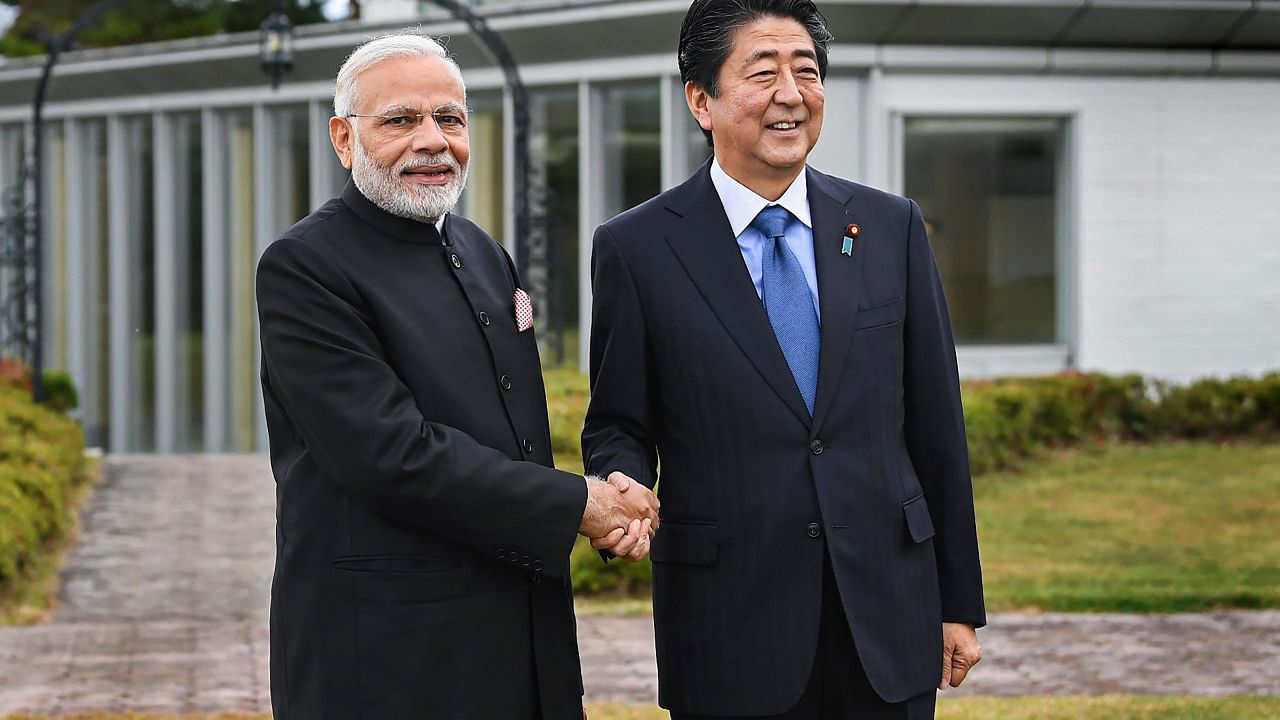
The shocking assassination of Shinzo Abe in the cultural capital of Japan, Nara, robs the world of a rare statesman among politicians in these fraught times of multipolar chaos.
For India, it is a particular loss - he was the architect of the special relationship the two countries enjoy today. It was his vision also of joining maritime democracies that created the Quad. He understood that democracies if they master interoperability, can outmanoeuvre China. This included along with Japan and India, Singapore, Thailand, Australia and the American 7th and 5th fleets based out of Diego Garcia and Bahrain, respectively.
When he floated the groundbreaking notion back in 2007, these countries were not even on the same table. This rare ability to envisage common geopolitics threads set Abe San apart. He was able to see that if growing Asian powers could come together and form a cohesive defence policy along with economic interconnections, they would pose a qualitative challenge to China. While the QUAD is a work in progress, that geopolitical test has opened too many political and potentially military fronts for China. It has taken away from Beijing the one thing it cherishes – predictability. The initiative completely repositions the strategic equilibrium, and China grapples with a situation a little bit akin to Weimer Germany before the First World War – too many fronts opened too soon, leading to imperial overstretch. This was the architecture that Abe strived for, and the sub-structure is falling in place.
Also Read | From Indira Gandhi to JFK: World leaders who were assassinated
India owes Abe, who visited thrice as prime minister, a record for a Japanese PM, a special debt. Early in his political life, Abe recognised that a county with India's population, economic growth rate and military capability was pivotal for Japan's foreign policy.
In 2015 Abe overcame very robust domestic opposition as the only country to have suffered a nuclear weapon attack to push through Japan India nuclear cooperation agreement. This allowed India, despite not signing the nuclear non-proliferation treaty, access to nuclear fabrication technology, atomic breeder tech and potentially 1000 MW nuclear reactors. A lot of the tech has been quietly transacted since. From urban
infrastructure to sanitation projects in Bihar, to the Suzuki cars and a lot in between. Japan has been a partner not just in India's strategy but its consumption economy.
For India, the abiding contribution of Shinzo Abe is the investment of massive political capital in our global future and public policy outcomes. He saw India as a natural fit. As early as 2014, he put together a special strategic and global partnership between the two countries with PM Modi. This resulted in a massive change where military bilateral took off, and Indian infrastructure projects received both the yen and the expertise in project execution. Japanese intelligence sharing, especially regarding the movement of Chinese submarines in the Kra isthmus, a transit point of oil imports for the People's Republic and actual operational maritime cooperation, took off. One example of that was in 2017 when an Indian Navy ship was refuelled by a US tanker from a Japanese port in the Sea of Japan. The number of such interactions has increased by a quantum over the last half a decade.
Also Read | Shinzo Abe, divisive & powerful ex-Japan PM, assassinated
Abe also took on China's $1 trillion 'one road one belt' initiative. He did it in his Japanese way in a carefully calibrated, conservative and economically viable manner. In India, three signature investments are proof of that approach - the first is the metro connectivity for Indian cities, the dedicated freight corridor, which will move goods on rails between Delhi and Mumbai and the bullet train. There are massive loans also for water sewerage and smart cities across India. These loans have a 30 to 50-year tenure with a .01 per cent to 1.4 per cent interest. All India has to do is finance its part, keep the rupee stable, give 30 per cent of the contracts to the Japanese and execute to Japanese timelines. As a global benchmark, Abe ensured a win for both countries.
With Abe sadly gone – the legacy will live on. In the Indo-Pacific now, India and Japan are committed partners. On social media, there is an abiding image of the martyred former prime minister performing Ganga Aarti with Indian PM Narendra Modi in the ancient city of Varanasi. A statue and a park in the forever city with the Japanese aesthetic in mind will be a fitting tribute to India's abiding friend.
(Ninad D Sheth is a journalist)
Disclaimer: The views expressed above are the author's own. They do not necessarily reflect the views of DH.